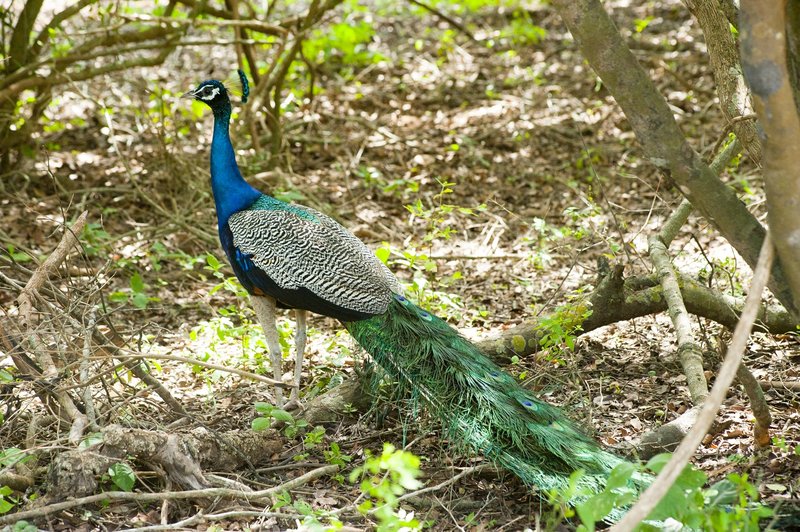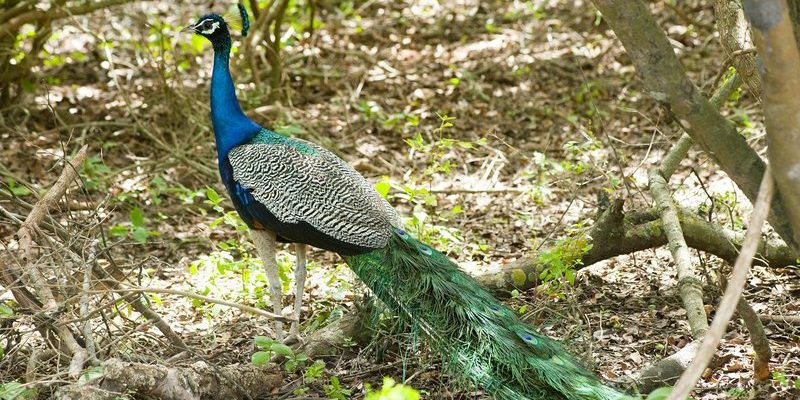
Peacocks are fascinating creatures with captivating behavior and vibrant feathers that can leave anyone in awe. While there are three species of peafowl—Indian, Green, and Congo—most people are familiar with the Indian peacock, which is the most common and widely recognized. In this guide, we’ll dive into the details you need to identify peacocks in their natural habitat, exploring their appearance, sounds, behavior, and habitat preferences.
Understanding Peacock Varieties
To truly appreciate how to identify a peacock in the wild, it helps to understand the different types. As mentioned earlier, there are three primary species: the Indian peacock, Green peacock, and Congo peacock.
- Indian Peacock: This is the most recognized type, especially in India, where it’s the national bird. Its vivid blue and green feathers, along with a fan-like tail adorned with “eye” patterns, make it a real showstopper.
- Green Peacock: Slightly less common, the Green peacock is known for its striking emerald green plumage. They inhabit areas in Southeast Asia and often have longer tails compared to their Indian cousins.
- Congo Peacock: The smallest of the three, the Congo peacock sports a mix of rich blues and greens, along with a unique feather pattern. They’re primarily found in the rainforests of Central Africa.
Understanding these distinctions can guide you in identifying them as you explore.
Spotting Characteristics of Peacocks
Once you know the varieties, the next step is figuring out how to recognize them. The Indian peacock is particularly eye-catching. Their feathers are iridescent, ranging from deep blue to vibrant green.
When identifying a peacock, pay attention to:
1. Color: The vibrant hues in their feathers can shimmer in the sunlight. While the males are famous for their striking colors, females, or peahens, are more drab in color, often browns and grays for camouflage.
2. Tail Display: The most iconic feature! During mating season, males fan out their tails, showcasing their “eyes.” This could be compared to wearing a dazzling gown to a dance. It’s all about attracting attention.
3. Size: Peacocks are large birds, often measuring around 4–5 feet in length, with tails that can add extra feet. This makes them quite hard to miss, especially in open areas.
Keep an eye out for these features when wandering through areas they inhabit.
Listening for Their Unique Sounds
Peacocks aren’t just a feast for the eyes—they’ve got some interesting vocalizations, too. You might be wondering, “How can I hear them if they’re hidden?” Well, their calls can give them away even before you see them.
Here’s a little breakdown of their sounds:
– Calls: Peacocks have loud, distinctive calls that are often described as a series of honks or screams. It’s like they’re announcing, “I’m here!” These calls are particularly prominent during mating season.
– Natural Behavior: They might also make softer cooing sounds when they feel comfortable. If you’re in a quiet area and hear unexpected noise, there’s a good chance a peacock is nearby.
Listening for these sounds can be just as vital as looking for their colors when identifying them in the wild.
Where to Look for Peacocks
Knowing where peacocks are likely to hang out can up your chances of spotting one. They thrive in various environments, including:
– Open Forests: Indian peafowl often prefer areas with trees but will generally avoid dense undergrowth. Think of it as their version of a park—some shade and some space to strut their stuff.
– Grasslands and Fields: You might also find them wandering in more open areas, searching for food like seeds and insects. Keep an eye out in the early morning or late afternoon when they are most active.
– Near Water Sources: Since they need water, peacocks are often seen near lakes, rivers, or ponds. This is a perfect spot for a peaceful afternoon stroll—just be on the lookout!
By knowing their preferred environments, you can focus your search and increase your chances of a successful sighting.
Recognizing Their Behavior
Peacocks have some fascinating behaviors that can help you identify them. Watching how they interact can provide clues about their presence.
1. Mating Displays: Male peacocks will display their feathers during courtship, often shaking and fanning them out to attract females. If you see a bird with its tail wide open, you’re likely witnessing one of nature’s most beautiful scenes.
2. Social Interactions: Peacocks are generally social creatures. If you spot a group, it’s likely to be a mix of males and females. You might see them foraging, preening, or simply relaxing together.
3. Territorial Calls: Male peacocks are known to be protective of their space. If you hear a series of loud noises and see one moving assertively, it might be defending its territory or calling out to attract a mate.
Understanding these behaviors can make your wildlife watching experience more enriching and enjoyable.
Respecting Their Habitat
While it’s exciting to see a peacock in the wild, it’s crucial to respect their habitat. Here are a few tips to keep in mind:
– Stay at a Distance: Use binoculars or a camera with a zoom lens to observe them without getting too close. This way, you won’t disturb their natural behavior.
– Don’t Feed Them: Feeding wildlife can disrupt their natural foraging habits. It’s best to let them find their food naturally.
– Leave No Trace: If you’re in their habitat, make sure to carry out what you bring in. Keeping their environment clean helps protect them and their future generations.
By following these guidelines, you can enjoy observing peacocks while ensuring their well-being.
Identifying a peacock in the wild can be an enchanting experience. With their vibrant colors, unique sounds, and fascinating behaviors, these birds are truly a spectacle of nature. By understanding the different species, characteristics, sounds, and behaviors, you’ll be well-equipped to spot these stunning creatures in their natural habitats.
Next time you’re out exploring, keep your eyes and ears peeled. Who knows? You might just catch a peacock displaying its magnificent feathers or hear its call echoing through the trees. Embrace the adventure of wildlife watching—you’ll not only learn to identify a peacock but also enjoy the beauty of the natural world around you.

